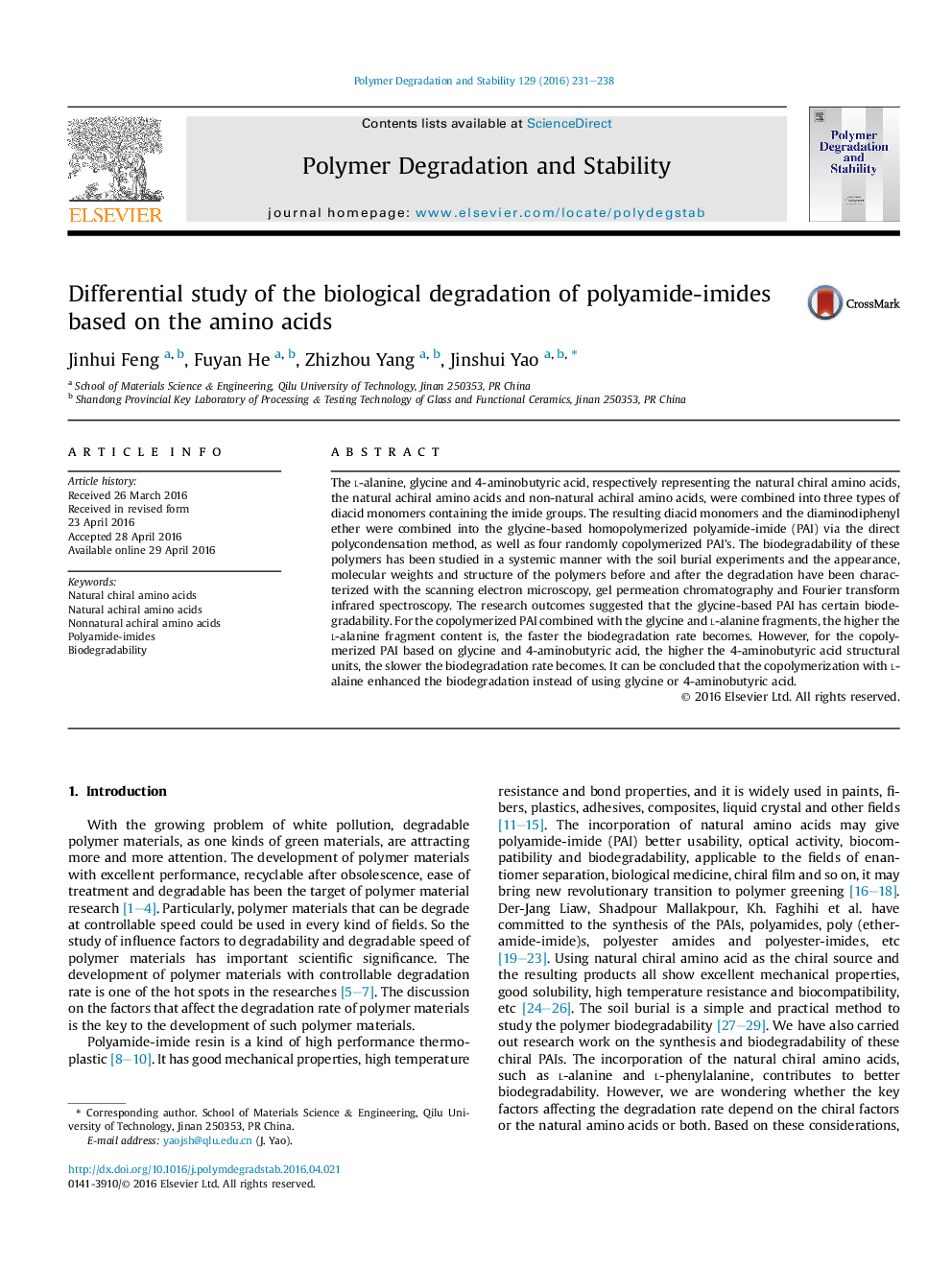| کد مقاله | کد نشریه | سال انتشار | مقاله انگلیسی | نسخه تمام متن |
|---|---|---|---|---|
| 5201120 | 1502884 | 2016 | 8 صفحه PDF | دانلود رایگان |
عنوان انگلیسی مقاله ISI
Differential study of the biological degradation of polyamide-imides based on the amino acids
ترجمه فارسی عنوان
مطالعه دیفرانسیل از تخریب بیولوژیکی پلی آمید امید ها بر اساس اسید آمینه
دانلود مقاله + سفارش ترجمه
دانلود مقاله ISI انگلیسی
رایگان برای ایرانیان
کلمات کلیدی
اسیدهای آمینه طبیعی کریل، اسیدهای آکریل طبیعی، اسیدهای غیر آلی آریارال، پلی آمید امید، تجزیه زیستی،
موضوعات مرتبط
مهندسی و علوم پایه
شیمی
شیمی آلی
چکیده انگلیسی
The l-alanine, glycine and 4-aminobutyric acid, respectively representing the natural chiral amino acids, the natural achiral amino acids and non-natural achiral amino acids, were combined into three types of diacid monomers containing the imide groups. The resulting diacid monomers and the diaminodiphenyl ether were combined into the glycine-based homopolymerized polyamide-imide (PAI) via the direct polycondensation method, as well as four randomly copolymerized PAI's. The biodegradability of these polymers has been studied in a systemic manner with the soil burial experiments and the appearance, molecular weights and structure of the polymers before and after the degradation have been characterized with the scanning electron microscopy, gel permeation chromatography and Fourier transform infrared spectroscopy. The research outcomes suggested that the glycine-based PAI has certain biodegradability. For the copolymerized PAI combined with the glycine and l-alanine fragments, the higher the l-alanine fragment content is, the faster the biodegradation rate becomes. However, for the copolymerized PAI based on glycine and 4-aminobutyric acid, the higher the 4-aminobutyric acid structural units, the slower the biodegradation rate becomes. It can be concluded that the copolymerization with l-alaine enhanced the biodegradation instead of using glycine or 4-aminobutyric acid.
ناشر
Database: Elsevier - ScienceDirect (ساینس دایرکت)
Journal: Polymer Degradation and Stability - Volume 129, July 2016, Pages 231-238
Journal: Polymer Degradation and Stability - Volume 129, July 2016, Pages 231-238
نویسندگان
Jinhui Feng, Fuyan He, Zhizhou Yang, Jinshui Yao,
